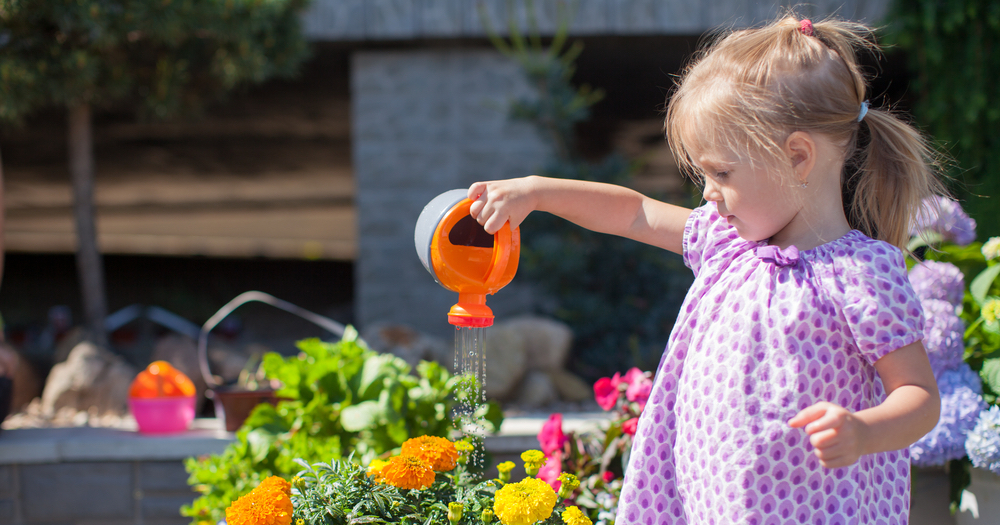Natural spaces, risky places
Published on Tuesday, 15 May 2018
Last updated on Friday, 24 January 2020

By Nicole Halton, Inspired EC
Australia is in the midst of a nature play revolution. Every second parent I speak to is concerned about children being indoors, on screens and lacking in the kind of imaginative, exploratory, outdoor childhood that they themselves enjoyed.
An increase in professional learning, resources and opportunities that inspire educators to look to the natural environment are also an indication of the current commitment to nature-based education. But despite the nay-sayers who suggest otherwise – nature play is not a trend.
Way back in 2004 we were working in a wonderful long day care centre that was doing some brilliant, forward thinking things in regard to programming. But, the outdoor space really let the centre down. The large space was essentially a barren wasteland of synthetic grass, wet-pour soft fall and a plastic monstrosity that was reminiscent of a small playground in a fast food restaurant. The big wake-up call came when the children asked to play hide and seek.
There was nowhere to hide.
We made a promise to ourselves and to all the children who would go on to attend the centre, that they would have better: That they would have a natural, challenging, exciting outdoor space to explore.
This commitment has gone beyond 2004 and is now just a part of who we are as early childhood education and care professionals. Seeing this nature play revolution has been exciting for us. In fact, the inclusion of nature in the Early Education and Care Services National Regulations may have seen us jump for joy!
113 Outdoor space—natural environment
The approved provider of a centre-based service must ensure that the outdoor spaces provided at the education and care service premises allow children to explore and experience the natural environment. Example. The use of natural features such as trees, sand and natural vegetation.
But while many services are eagerly embracing this regulation, others find themselves stuck – unsure of how to change their environment without a huge budget. The bad news (if you choose to think of it that way!) is – it's not something you should do overnight.
The big problem with natural play environments is a lack of underpinning knowledge. Educators need to have a deep understanding of how children play and how a natural environment can impact on that play. Without that deep understanding (achieved through reading widely, attending professional learning opportunities and asking questions) the plants die, and the mud dries up.
The great news is that if you are committed to nature pedagogy and risky play, a natural environment can be simple to achieve and much more affordable than its synthetic counterpart.
Simple Ideas for Natural Spaces and Risky Places:
- Rope swing – piece of rope with a stick as a handle, above head height
- Tyres – perfect for construction and developing core strength
- Sheets – great to make one-person cocoons in trees and cubbies
- Sticks – if you don’t have them… get them! Short ones, long ones, bendy and strong ones!
- Rope – different thicknesses for construction, swinging and open-ended games
- Natural loose parts – rocks, logs, seed pods. See what is in the natural spaces around you and collect off the ground (we shouldn't need to buy pinecones!!)
- Grow flowers that children can use – any type of daisy, native grasses, plants that grow interesting pods or seeds
- Plant natives to attract wildlife – contact your local land-care group to find out what is native to your area
- Containers – baskets and buckets to cart dirt, loose parts, sand and sticks
Perhaps the number one tip is to take the lead from the children – if they have a patch where they tend to dig at the ground, why not make that a mud pit? If they are constantly traipsing water from the bathroom to the sandpit – put a rainwater tank at the side of the sandpit.
When we fail to observe how children use the existing space and factor that and their opinions and ideas into our plans for outdoor environments, we fail the children. During the process of revamping or upgrading an outdoor space, we need to collaborate with all stakeholders and continually ask the question: who is this space for?
Nicole Halton is the co-founder of Inspired EC, an early childhood consultancy company based in Lake Macquarie NSW. Nicole is the author of several early childhood books, writes regularly on the Inspired EC website and for parenting website BellyBelly. Inspired EC provides professional development, consultancy and resources for early childhood services and is committed to nature play and ensuring that children have a magical childhood!
Related Articles
There are currently no related articles.
